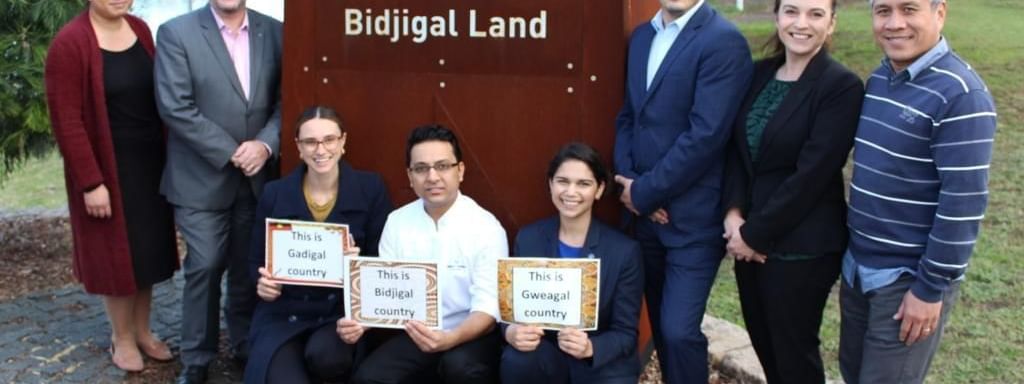Recognising the History and Culture of Aboriginal and Torres Strait Islander Peoples in the Wolli Creek Area
The Sydney Metropolitan area we know today was originally home to 29 clan groups known as the Eora Nation.
“Eora” refers to coastal Aboriginal peoples and translates to “from this place”.
The local people who lived on the north side of Botany Bay, between the mouth of the Cooks River and present day are known as the Kameygal, or Spear Clan due to their impressive use of hooks made from oysters and hunting spears, which reached lengths of up to 6 metres.
To the north of the Cooks River, the country of the Gadigal or Cadigal clan extended along the shore of Port Jackson from South Head to Darling Harbour, while the Wangal clan inhabited the area between the Parramatta River and the Cooks River from Darling Harbour to Rose Hill.
The majority of scholars believe that the country to the south, between the Cooks River and the Georges River from Botany Bay to Rose Hill was associated with the Bediagal clan. At the centre of the territory was a camp near Salt Pan Creek. Pemulwuy and his son Tedbury were members of this clan. One source, however, combines the clan names of Bediagal, Bidjigal and Bejigal into one group, and places their lands northwest of Parramatta near Castle Hill.
Wolli Creek was named after the Koori name of adjacent creek running into Cook’s River though the northern border of the original Turrella settlement. Wolli Creek was first known as Woolly Creek, probably after the weeds in the water that gave it a thick appearance. The meaning of Wolli Creek is “Camp”.
Freshwater was a rare thing across the flat, estuarine expanses between. Botany Bay and Port Jackson, but it was plentiful at Wolli Creek. There was abundant wildlife; there were fish, edible water plants, swimming holes and cool shady sandstone rock shelters tucked into the valley's sharp walls.
We recognise the traditional custodians of the land and pay our respects to past, present and emerging leaders.
This NAIDOC Week, to celebrate and recognise the history, culture and achievements of Aboriginal and Torres Strait Islander peoples, guests staying with us will receive NAIDOC biscuits featuring flavours of hibiscus, wattleseed, and macadamia.
We've shared the recipe below if you'd like to make your own at home.
NAIDOC Biscuits Recipe
Ingredients - Biscuits:
- 300g Butter
- 300g Sugar
- 300g Almond meal
- 300g Flour
- 3g Salt
- 50g Egg white
- 20g Dried Hibiscus
- 20g Wattleseed
Method - Biscuits:
- Emulsify half of the butter with the Ibiscus and the other half with the wattleseed. Cool down the butter for a couple of hours in the fridge before use it for the recipe.
- Make half of the dough at the time, one using the pink butter and the second time using the brown one.
- Mix butter and sugar with a kneading machine for few seconds until combined, add the almond meal and mix for other few seconds, add salt, eggs and flour and finish mixing the dough for a couple of minutes.
- Wrap the dough and let it rest in the fridge for 2 hours, then cut it in 4gr portion and round them and place them in a tray.
- Cook the cookie in the oven at 180* static for 14 minutes.
- Let the cookies cool down before pair them.
Ingredients - Spread:
- 250g Australian Raw Macadamia
- 1tbs Coconut Oil
Method - Spread:
- Blend the macadamia with the coconut oil until creamy and smooth.
Enjoy!

